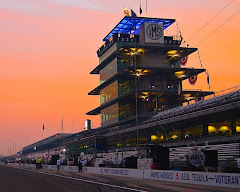
The primary mission of The Indy Idea is to discuss how IndyCar might become a viable competitor in the motorsports entertainment marketplace. At present, it is not.
IndyCar is not economically competitive because it is grossly overpriced. I initially provided quantitative evidence in support of this argument here. I further revised my analysis here and here. I further explained the ramifications of IndyCar's non-competitive market position in the second half of this post.
 The relevant microeconomic assumption is that demand exists for virtually any product at some price; however, demand does not necessarily exist at any price. For example, McDonald's sells millions of Big Macs each year at a price point of approximately $2.99 apiece. How many Big Macs do you think McDonald's would sell if the price were no less than $11.96 apiece?
The relevant microeconomic assumption is that demand exists for virtually any product at some price; however, demand does not necessarily exist at any price. For example, McDonald's sells millions of Big Macs each year at a price point of approximately $2.99 apiece. How many Big Macs do you think McDonald's would sell if the price were no less than $11.96 apiece?That is effectively the value proposition that IndyCar and its teams offer to sponsors.
If you are interested to know why sponsors such as Target and 7-Eleven are willing to take that deal, you will find answers here. Unfortunately, firms of that particular type are too few in number to sufficiently finance the IndyCar Series.
Incidentally, this is a marketing exercise. Think of it as having to do with the 2nd "P" of marketing - Price.
IndyCar "As If"
Let us assume that IndyCar might somehow price its product to correspond to its market value. That would necessarily mean that operating a competitive IndyCar team for the entire season must cost no more than $1 million.
Setting aside exactly how we might accomplish this objective, let us examine the potential benefits so that we might accurately judge whether or not the resulting pain would be worth it.
The following list is by no means comprehensive. The benefits are merely top of mind effects that would be the logical economic results of pricing IndyCar racing to match its market value.
- Teams attract sponsors because sponsorship is correctly priced
- IndyCar attracts sponsors at the series level because sponsorship is correctly priced
- TEAM subsidy payments can be cut because teams have fewer costs and more sponsors
- Some savings from reduced TEAM subsidies can be used to promote IndyCar
- Team and series sponsors can increase activation and promotion budgets because the cost of entry is reduced
- IndyCar can reduce its required sanction fee because it no longer must subsidize teams
- Profits to race promoters increase because the sanction fee is reduced
- Race promoters can reinvest some of those profits to increase promotion of IndyCar events
- Demand for IndyCar races increases among race promoters and tracks because IndyCar events are profitable
- IndyCar selects new events according to strategy rather than necessity because it has a broad selection of available venues
- Team owners can hire drivers based on talent and marketability because correctly priced sponsorship is available
- The ladder system begins to work because the top rung is available to drivers who demonstrate that they are talented and marketable
- Ride buyers continue to exist; the only difference is that there are more of them because rides are cheaper to buy
- Field sizes therefore increase
- Drivers who fail to qualify are not excluded for the remainder of the season because their sponsorship packages are correctly priced for a full season; financial risk to sponsors is reduced
- On-track competition is enhanced because the entry list grows
Pie in the Sky or Something to Try?
Those effects seem pretty desirable to me.
That said, we must consider how IndyCar might devise a product that allows teams to sell primary sponsorship at its true market value. The cost of entry would need to be no more than 25% of the current price.
It can be done, albeit painfully.
Therefore, I ask for your help. I am looking for ideas both big and small that will drastically cut operating costs.
I am not looking for reasons why it can not or should not be done. Don't tell me why I should pay $11.96 for a Big Mac. I don't care how much you like Big Macs. You'll never convince me that I should pay more than $2.99 for it.
Roggespierre

